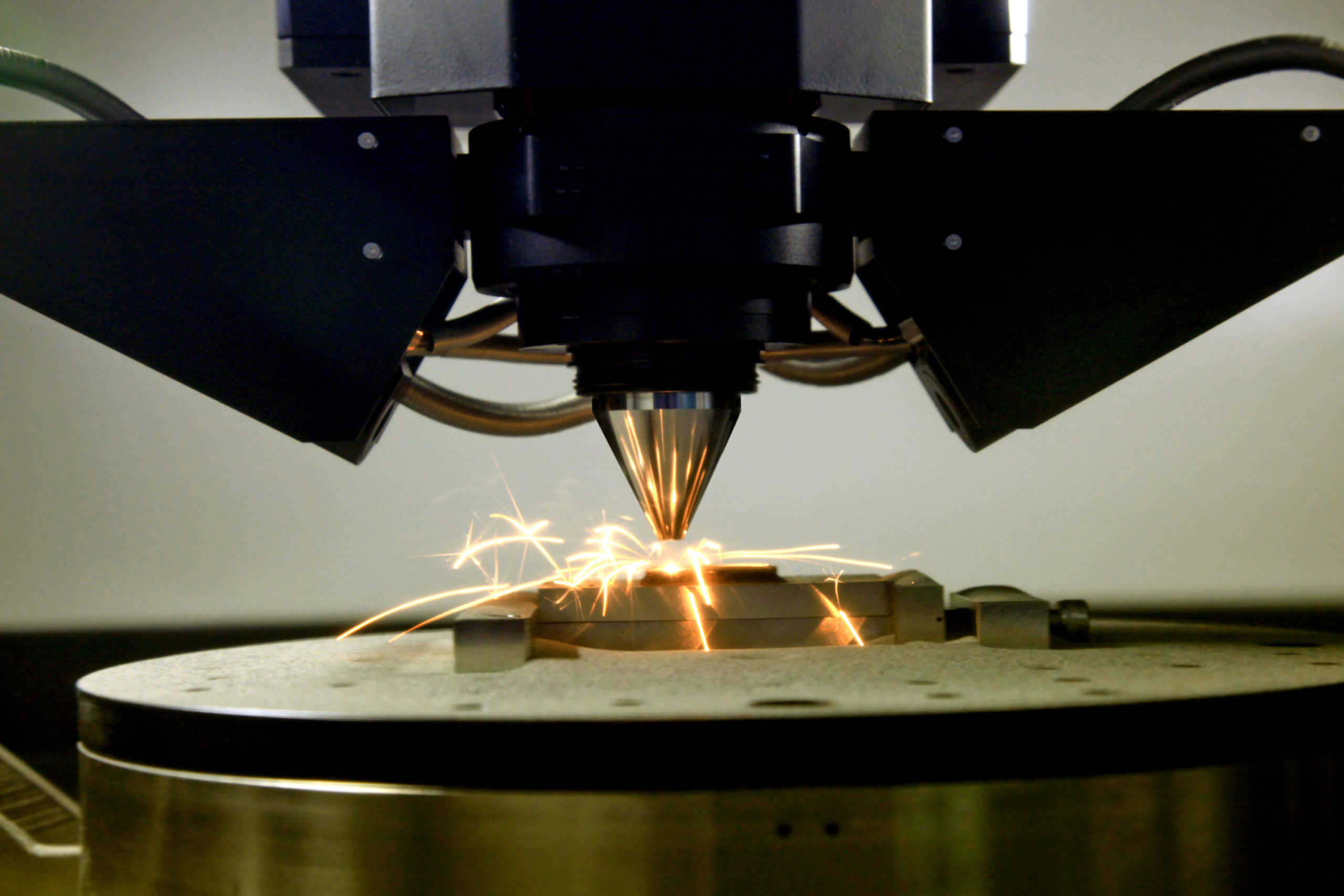On December 21st, the ribbon was cut on the first 3D-printed Habitat for Humanity home in the nation in a subdivision in Virginia. The Habitat for Humanity of the Peninsula and Greater Williamsburg partnered with Alquist to use the computer printing technology to create the three-bedroom home. The computer printing of the 1200 square foot home took 28 hours. The home was printed of concrete.
Pictures of the home show a very traditional home design that fits into the character of the surrounding neighborhood. The printed concrete looks somewhat like stacked masonry from a distance. The stratification of the concrete becomes more apparent as you get close to the wall surface. The printing system consists of a gantry structure, on which the concrete applicator runs. The applicator lays down thin layers of concrete, similar to how a baker pipes icing onto a cake or cookie. The applicator is guided by computer software and lays down precise amounts of concrete in a double wall configuration. A horizontal masonry ladder connects the double-wall, with common reinforcing bars used to strengthen load-bearing or structural walls. The construction method eliminates the need for formwork, further reducing development costs (in 2018, the PERI Group, the world’s largest manufacturer of formwork and scaffolding systems, purchased a significant stake in the company that developed the concrete application technology).
The home is built on a concrete slab. The printed concrete can be worked manually while still wet, to create smooth interior or exterior surfaces, reducing the need for sheetrock installation, while allowing the installation of siding or brick on the exterior when desired. Alquist’s website references leaving the concrete exposed as a final treatment or staining the concrete once it has cured for the interior surfaces. Other interior treatments include studding out the walls and installing drywall for a traditional appearance. Roofing systems on these houses appear to be more traditional construction, with wooden trusses, and traditional shingles.
The construction method saves about 15% per square foot on construction costs. Habitat estimates that the project reduced construction time by a month. Alquist installs a 3D printer in each of the homes that they build, allowing the homeowner to print replacement parts such as electrical outlet plates or cabinet knobs, as needed. The Habitat affiliate partnered with Virginia Tech on the project to provide performance monitoring. The concrete construction is expected to hold up well to hurricane winds and tornados.
Thanks to the double wall construction, the printed house has a thermal break, resulting in a tight envelope with an R-value of 21.5. The home requires additional air exchanges, and an energy recovery ventilator is used to ensure the availability of fresh air.
The printer applicator is manufactured by COBOD, based in Copenhagen, Denmark. In 2020, COBOD technology was used to build the first 2 story 3D-printed home in Europe, at a location in Westerlo, Belgium. That project was developed by students and was studied extensively. Their analysis shows savings estimated up to sixty percent on material, time, and budget. It took just three weeks to print the 2 story house.
The Habitat for Humanity affiliate’s story on this unique project is found at https://www.habitatpgw.org/habitat-for-humanity-peninsula-and-greater-williamsburg-dedicates-nations-first-ever-3d-printed-habitat-home-to-williamsburg-family/
The manufacture of concrete is not the most environmentally-friendly process, as it takes a substantial amount of fossil fuel to heat the raw materials, and a great deal of carbon dioxide is emitted into the atmosphere. Wasp, a firm in Italy, is working to create an alternative to the use of concrete in the 3D House printing process. They have developed a system that uses soil from the building site in the creation of mud, that is extruded into a home. Their process also builds a double wall house but uses the extruded material to create cross-hatching bracing between the double walls, rather than the steel reinforcing used by the Alquist system. In dryer climates, the mud material can be longer-lasting, particularly when the house is equipped with wide roof overhangs. But Wasp is researching additives that can be used as a green cement, to provide greater structural integrity, without the ecological problems of building with concrete. Learn more about their work at https://www.youtube.com/watch?v=4MLJs1KRa0Y
The Curmudgeon

